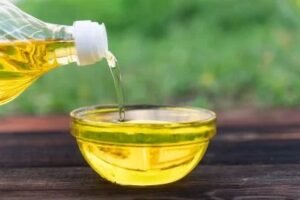Vegetable Oil Plant Cost in India: Covering Project Setup Details, Business Plan and Requirements
In India’s evolving agribusiness landscape, setting up a vegetable oil processing plant is becoming an attractive opportunity for entrepreneurs, investors, and MSMEs. The increasing demand for edible oils, driven by a growing population, changing dietary habits, and rising awareness of healthy cooking oils, has significantly elevated interest in the vegetable oil plant cost in India.
This blog explores the key cost drivers, essential elements of vegetable oil processing plant setup, and critical factors that affect capital investment. Whether you're planning a small-scale unit or a medium-sized plant, understanding the setup cost analysis, raw material requirements, and machinery needs is vital for building a cost-effective, sustainable business.
Sample Report: https://www.imarcgroup.com/vegetable-oil-processing-plant-project-report/requestsample
Understanding the Vegetable Oil Processing Business in India
Vegetable oil extraction and refining is a lucrative agro-processing sector. The industry encompasses oils such as sunflower, soybean, groundnut, mustard, cottonseed, and palm oil. Depending on the source crop, raw material requirements and technology vary, but the fundamental processing framework remains largely the same.
For a successful vegetable oil processing plant setup, understanding regional crop availability, supply chains, oil demand, and quality standards is the foundation. More importantly, calculating the vegetable oil plant involves various cost components that should be carefully planned and managed.
Key Factors That Influence Vegetable Oil Plant Cost in India
Let’s break down the essential factors that contribute to the setup cost analysis of a vegetable oil unit.
1. Location and Land Development Cost
One of the foremost factors that impact vegetable oil plant cost in India is the location. Setting up in proximity to oilseed growing regions ensures steady access to raw materials, reduces logistics costs, and supports local sourcing. However, land rates vary widely depending on geography and urban proximity. Additionally, site development—including utilities, drainage, access roads, and safety infrastructure—adds to the initial investment.
2. Raw Material Requirements and Procurement Strategy
The raw material requirements differ depending on the oil type. For example:
-
Sunflower, soybean, and mustard are seasonal crops.
-
Palm oil may require imports.
-
Groundnut and cottonseed availability fluctuates regionally.
Establishing supplier contracts, storage facilities, and quality testing systems ensures consistency in production and impacts operational efficiency. A large chunk of operational expenditure is tied to raw material procurement, making it a critical cost factor for long-term planning.
3. Machinery Requirements for Oil Extraction and Refining
A significant portion of vegetable oil plant goes into purchasing and installing the right machinery. Depending on plant size, automation level, and oil type, the following machinery is commonly used:
-
Seed cleaning machines
-
Oil expellers or solvent extraction units
-
Neutralizers and bleachers
-
Degumming and deodorization systems
-
Filtration and bottling machines
For startups and MSMEs, semi-automatic systems may be suitable, while larger units may require continuous process equipment. The machinery requirements should align with the desired capacity, oil quality, and compliance standards such as FSSAI and BIS.
4. Infrastructure and Utility Setup
Beyond machinery, vegetable oil processing plant setup involves constructing functional areas such as:
-
Storage areas for seeds and oil
-
Processing and refining units
-
Packaging sections
-
Power backup systems
-
Water treatment and waste management systems
Utility requirements include consistent electricity, water, and fuel, which contribute to both setup and operational costs. These elements should be planned early, as utility insufficiencies can cause production downtimes or quality issues.
5. Labour and Human Resources
Depending on automation level, the plant may require operators, engineers, quality control technicians, packers, and logistics personnel. While India offers competitive labour rates, skilled labour in machinery operation and quality assurance can slightly elevate costs but adds tremendous value in maintaining consistency.
6. Licensing, Compliance, and Certifications
To set up a vegetable oil processing plant in India, obtaining licenses and complying with food processing standards is mandatory. Some of the key requirements include:
-
FSSAI Registration
-
GST Registration
-
Factory License
-
Pollution Control NOC
-
Fire and Safety Compliance
These licenses not only add to the setup cost analysis but also determine your plant’s ability to operate legally and access large-scale distribution networks.
7. Packaging and Branding Setup
Packaging plays a crucial role in oil shelf life and marketability. PET bottles, pouches, tin containers, and labeling materials are required, depending on the target consumer segment. While packaging setup may not be a heavy capital investment, it must be aligned with the plant's oil output, branding strategy, and distribution goals.
Entrepreneurs must also budget for initial marketing, certifications (like AGMARK or ISO), and distribution trials to establish brand credibility.
8. Working Capital and Operational Buffer
While this may not be a fixed asset cost, working capital is essential to manage day-to-day operations like purchasing raw materials, paying staff, maintaining inventory, and logistics.
Setup Cost Analysis: What Entrepreneurs Should Know
When evaluating a vegetable oil processing plant setup, a comprehensive cost breakdown should be considered across the following heads:
-
Pre-operative Expenses: Feasibility studies, legal consultations, and licensing.
-
Civil Construction: Buildings, sheds, internal roads.
-
Plant & Machinery: Procurement, installation, trial runs.
-
Utilities Setup: Electricity, water, waste treatment.
-
Working Capital: Raw material stock, operational reserves.
-
Training & Recruitment: Hiring, SOP development, training modules.
Final Thoughts: Strategic Planning for a Profitable Venture
Establishing a vegetable oil processing plant requires strategic alignment of capital, raw material sourcing, machinery procurement, and compliance. While exact figures will vary depending on capacity and product focus, entrepreneurs and MSMEs should plan comprehensively around the key drivers mentioned above.
To navigate the complexities, one can seek assistance from food processing consultants, machinery suppliers, and government schemes under PMFME or MOFPI. With the right planning and execution, the investment in vegetable oil plant cost can translate into a profitable, scalable, and sustainable venture.
